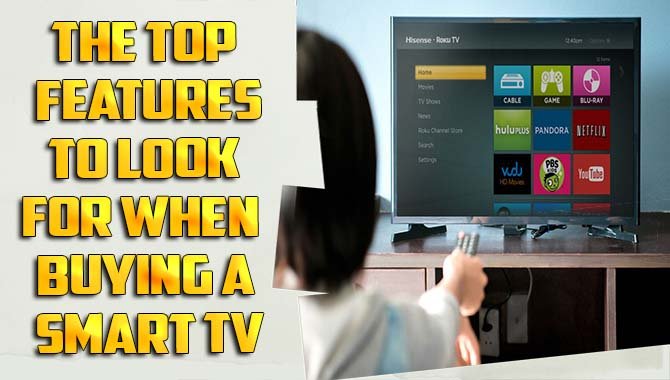Have you ever wondered why some shows look so much clearer than others? TV resolution plays a big role in this. Every time you stream a show, the resolution is a key part of your experience. But what does it all mean? There are different types like 480p, 720p, 1080p, and 4K. Understanding these can help you pick the best option.
Imagine watching your favorite movie on a big screen. Now, think about how different it feels when you see every detail. A TV resolution comparison chart for streaming can help you see what each number really means. You’ll know how to choose the best resolution for your device.
Did you know that many people don’t realize the difference between 1080p and 4K? This is surprising, right? Knowing the differences can make your viewing experience so much better. With the right information, you’ll be ready to enjoy streaming like never before!
Tv Resolution Comparison Chart For Streaming Services

TV Resolution Comparison Chart for Streaming
Curious about TV resolutions? A TV resolution comparison chart can help you understand what each one means. You’ll learn about 720p, 1080p, and 4K options. Each type affects your viewing experience. For example, 4K offers stunning details, perfect for big screens. Imagine watching your favorite movies with crystal-clear images! Plus, a handy chart shows how resolutions stack up for streaming services. Knowing this helps you choose the right TV for your needs and enhances your movie nights.
Resolution Breakdown: A Detailed Comparison
Sidebyside analysis of 720p vs. 1080p. Advantages and drawbacks of 4K and 8K resolution.
Understanding different screen resolutions can be fun and enlightening! 720p and 1080p are like siblings, where 1080p is taller and clearer—like a giraffe next to a dog! While 720p is decent for TVs, 1080p brings sharper images, especially for those action-packed movies. Now, enter 4K and 8K. 4K offers four times the detail of 1080p, perfect for those Friday night cinema views. But wait, 8K is like a super powered telescope! It shows unbelievable clarity, yet requires a lot of bandwidth—like feeding a hippo! Here’s a quick comparison:
| Resolution | Pixels | Benefits | Drawbacks |
|---|---|---|---|
| 720p | 1,280 x 720 | Good for smaller screens | Less detail |
| 1080p | 1,920 x 1,080 | Sharp images | More data required |
| 4K | 3,840 x 2,160 | Four times the detail | Requires strong internet |
| 8K | 7,680 x 4,320 | Incredible clarity | Very high bandwidth needed |
Choosing the right resolution can make your viewing experience awesome. Go ahead and pick your screen wisely!
Impact of Streaming Services on TV Resolution
How major streaming platforms (Netflix, Hulu, Amazon Prime) handle resolutions. Recommendations for optimal settings based on resolution.
Streaming platforms like Netflix, Hulu, and Amazon Prime have changed how we enjoy TV shows and movies. They all support various resolutions to make watching more fun. For example, Netflix offers content in 4K, while Hulu focuses on HD. The quality of your screen can make or break your viewing experience.
If you love crisp images, consider setting your device to the highest resolution it offers. Having popcorn in hand helps too! Here’s a quick guide in case you’re unsure:
| Streaming Service | Resolution Offered | Optimal Setting |
|---|---|---|
| Netflix | 4K, HD | 4K if available |
| Hulu | HD | HD Always |
| Amazon Prime | 4K, HD, SD | 4K for epic movies |
Always check your settings. Watching a great show in bad resolution is like eating a burger without the toppings—just sad!
Factors Influencing Streaming Quality
Internet speed requirements for different resolutions. Role of compression in streaming quality.
Many things decide how good a stream looks. First, internet speed is very important. Different picture sizes need different speeds. For example, HD needs at least 5 Mbps while 4K needs 25 Mbps or more. Next, compression affects quality too. It shrinks files to save space but can lose details. Finding the right speed and compression balance helps you enjoy clearer streams.
What internet speed do I need for streaming?
You need different speeds for different qualities. For example:
- Low quality: 1-3 Mbps
- HD quality: 5-10 Mbps
- 4K quality: 25 Mbps or more
Always aim for higher speeds for better quality!
Choosing the Right TV Resolution for Your Needs
Factors to consider: viewing distance, screen size, and content type. Tips for futureproofing your TV purchase.
Choosing the right TV resolution can make a big difference. First, think about how far you sit from the screen. The closer you are, the higher the resolution you’ll want. Next, consider screen size. Bigger screens need better resolution to look clear. Also, the type of content matters. Watching movies or games might require a higher resolution than regular shows.
For futureproofing your TV, here are some tips:
- Choose at least 4K resolution for sharp images.
- Make sure it has multiple HDMI ports.
- Look for smart features for easy streaming.
This way, you’ll enjoy great viewing now and in the future!
What is the best resolution for streaming?
The best resolution for streaming is 4K. It offers sharp pictures and works well with most new TVs.
Common Misconceptions about TV Resolutions
Debunking myths about 4K and 8K superiority. Clarity vs. resolution: what really matters for streaming.
Many people think that 4K and 8K resolutions are always the best. But that’s not true. Resolution is important, but it’s not everything. The clarity of the screen can matter more. Streaming quality often depends on your internet speed and the content you watch.
- 4K offers great detail, but 8K is not always needed.
- If you watch on a small screen, you may not notice the difference.
- Good streaming produces clear images, even in lower resolutions.
What are some common myths about TV resolutions?
Many believe higher resolutions always mean better picture quality. However, the screen size and distance you watch from can change how much you notice. Some might say 8K resolution is a must-have, but that’s only true if you have a large enough screen to enjoy its details.
Future Trends in TV Resolution and Streaming
Emerging technologies in TV resolution. Predictions for the next generation of streaming content.
New TV resolutions are popping up everywhere! 8K is the latest buzz, promising mind-blowing detail. Imagine seeing every tiny popcorn kernel in your movie! Streaming services are also stepping up their game, exploring virtual reality and immersive content. Picture yourself right in the action! Experts believe these technologies will change how we enjoy our favorite shows. And guess what? Soon, you might have to buy a bigger couch because your screen will be HUGE!
| Resolution | Pixels | Streaming Potential |
|---|---|---|
| 4K | 8,294,400 | Standard |
| 8K | 33,177,600 | Emerging |
Conclusion
In conclusion, a TV resolution comparison chart helps you understand the differences between 720p, 1080p, 4K, and 8K. Higher resolutions offer clearer pictures and a better viewing experience. You can use this knowledge to choose the best TV for streaming your favorite shows. For more tips, explore guides on selecting TVs and streaming services. Happy watching!
FAQs
Sure! Here Are Five Related Questions On The Topic Of Tv Resolution Comparison Charts For Streaming:
Sure! When comparing TV resolutions, you’ll notice three main types: HD, Full HD, and 4K. HD stands for High Definition, and it has good picture quality. Full HD looks even better than HD. 4K has the best quality of all and shows very tiny details. If you want a great viewing experience, choose 4K!
Sure! Please share the question you want me to answer.
What Are The Key Differences Between 4K, 1080P, And 72Resolutions In Terms Of Streaming Quality?
The main difference between 4K, 1080p, and 720p is how clear the picture looks. 4K gives the sharpest image. This means you can see more details. 1080p is still very good but not as sharp as 4K. 720p has a softer picture and can look blurry on big screens. So, if you want the best quality, choose 4K!
How Do Streaming Services Like Netflix And Amazon Prime Video Differentiate Their Content Based On Tv Resolution?
Streaming services like Netflix and Amazon Prime Video offer shows and movies in different picture qualities. This is called resolution. Higher resolution means clearer pictures. For example, some movies are in HD, which stands for High Definition. Others might be in Ultra HD, which looks even better. You can choose what looks best on your TV!
What Hardware Requirements Are Necessary To Stream In Resolution Effectively?
To stream video in good quality, you need a powerful computer or gaming console. A fast internet connection is also important; aim for at least 5 megabits per second (Mbps). You will need a good webcam for video and a microphone for clear sound. Finally, a strong graphics card will help make the picture look better.
How Does The Quality Of Internet Bandwidth Affect The Viewing Experience Of Higher-Resolution Content?
The quality of internet bandwidth affects how well you can watch high-quality videos. If your bandwidth is good, videos play smoothly and look great. If it’s not strong enough, videos might pause, freeze, or look blurry. This can make it hard to enjoy the show or movie. So, having better internet helps us watch our favorite shows without problems!
Are There Specific Genres Of Content That Benefit More From Higher Resolutions When Streaming On Tvs?
Yes, some types of shows and movies look better in high resolution. For example, action movies and nature documentaries have lots of details. You can see clearer images and brighter colors. This makes them more fun to watch. So, if you love these genres, higher resolution really helps!







